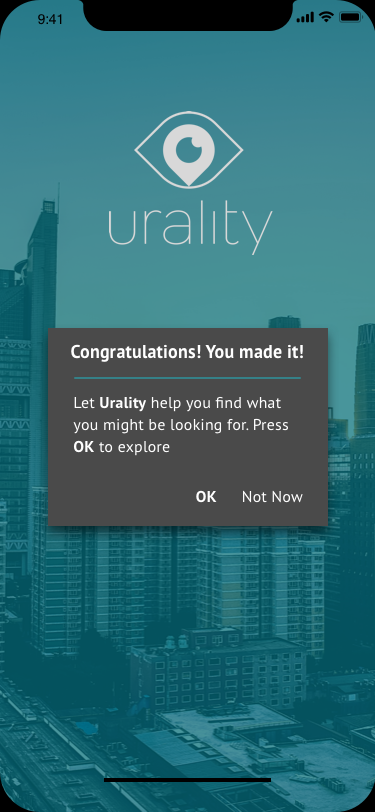
Besides interviewing the traveler that is planning a trip, we wanted to find data that validated our assumptions that travelers wanted to experience “local flavor” and not always feel like a tourist. We pulled a report from Skift, which is the largest industry intelligence platform providing MEDIA, INSIGHTS and MARKETING to key sectors of travel. Below are just a few nuggets of information we found that helped personalize the experience within Urality.


Who are we designing this for anyway?

Martha is in sales and has a flexible schedule at work which allows her to travel a lot, not only for work but for leisure. She enjoys finding the local places that are off the beaten path. She uses social media and searches to find these places. She is tech-savvy and not afraid to try new things. Martha considers herself as an "avid taster of good brews and food."
Most people like being taken care of and catered. It feels good and makes them feel important. Examples of this are plenty going back to personalized email campaigns (“Dear Tabitha,”) and exist in a lot of other technology today whether it be machine learning or geolocation.
One aspect of personalization was onboarding for all new users to the app. This would allow the app to deliver specific, tailored information while the user was on the app.
We wanted to take a look at an app that used on-boarding to deliver personalized content.
Because why try and reinvent the wheel!

Here the user lands on the main page and has an option to continue with their interests or skip and go to a Quick Start option that would deliver generic content either based on where they or what they wanted to do. We drilled down to EAT, SLEEP or PLAY. Those were the most common responses of what people wanted to do when they were in a destination. To get the personalized information, the user needed to select a few interests. With the Flipboard example, they only required 3 categories to continue.

Yay! The user received content they liked and they have made a trip. Now what?
Another feature we worked on was providing the traveler with an “assistant” or “concierge". When talking with travelers, we found that, even after all the planning was done and they arrived, saving time was important to them. It takes time to find where the places to see and things to do are and if they are doing it in an efficient manner. After all, saving time gives the traveler time to do more.
Quote from an interviewee:
“There are a lot of things to do when arriving at a destination (baggage claim, taxi, etc) and if I knew a lot of things in advance (time to hotel, eateries nearby, etc), it could alleviate the anxiety of finding those places.”
So I went to the source of where travelers go for information, local hotels, to see what the most common requests were from visitors.
“What are the visitors looking for when they arrive?”
“What information do you give them (pamphlets, brochures, etc.)?
“When are they asking the questions?”
Some responses:
"Questions are asked mostly at check in."
"No information is provided in the rooms themselves."
"The are looking for local things to do and the good local eateries."
Use Case
1. User arrives at a destination, maybe an airport. Urality knows the user has landed an starts the conversation and asks the user if they want to explore the area.
2. The traveler then receives a prompt to let Urality know where their lodging is, if they have lodging, and it can help find optimal routes with the user’s saved location in mind.
3. In this case, the user needs to find lodging. Urality can filter distance, price, number of rooms, etc. to find the best route.
4. Urality could also deliver recommendations based on the user’s interest. After finding the lodging, Urality can suggest that an eatery the user might have saved or shown interest in is on the way.
This feature is all about saving time to do more.








If you like what you see and want to work together, get in touch!
tomchaffin717@gmail.com